There’s no shortage of day trip possibilities from Bordeaux. While a visit to the world-famous Bordeaux vineyards of the Médoc or Saint-Émilion is sure to top any list of the top things to do in Bordeaux, a visit to the UNESCO listed Citadelle de Blaye shouldn’t be missed. As one of the three military fortifications that make up what is known as the Bolt of the Estuary, the Citadelle de Blaye is an impressive historic military fortification set overlooking the largest estuary in Europe. And best of all? It’s completely free to visit, making it one of the best free attractions around Bordeaux.
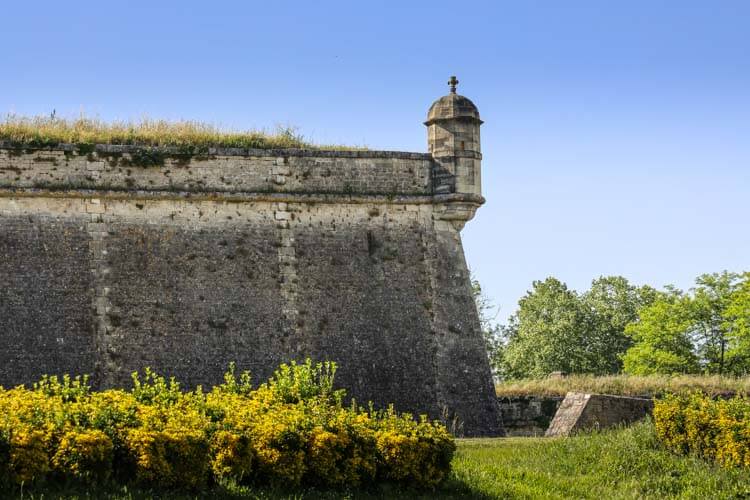
The History of the Citadelle de Blaye
The Citadelle de Blaye was designed by the famous French military engineer, Sébastien Le Prestre de Vauban. Simply known in France as Vauban, he was renowned as in expert in his field and his designs served as the prevailing model of fortification for nearly 100 years.
Along with 160 military buildings and fortifications around France that Vauban designed under Louis XIV, he is responsible for the Bolt of the Estuary. The strategic defense system was built between 1685 and 1689 to protect Bordeaux from ships sailing up the Gironde Estuary.
The Citadel of Blaye, Fort Paté on an island in the middle of the Estuary and Fort Médoc on the western side of the Estuary make up the Bolt of the Estuary. Vauban decided that the three fortifications were necessary because of short range of cannons at the time would not cover the entire 3 kilometer width of the Gironde Estuary. These three fortifications served both defensive and offensive strategies and helped control the flow of river traffic.
In 2008 the Citadelle de Blaye, along with 11 other groups of fortifications and buildings designed by Vauban, became a UNESCO World Heritage Site.
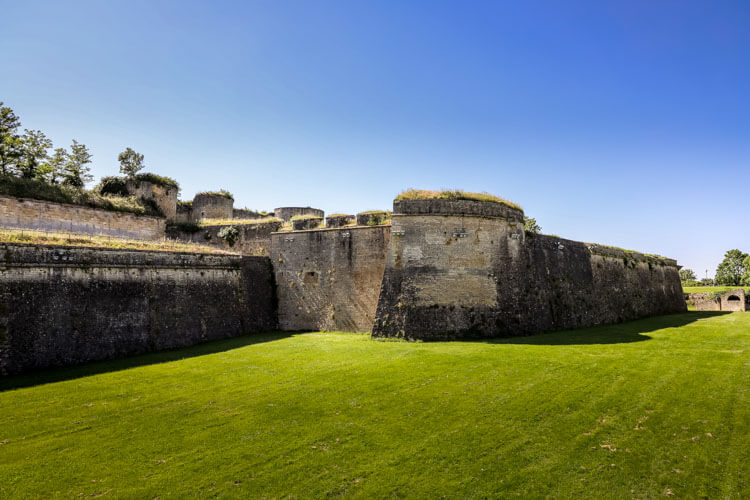
Visiting the Citadelle de Blaye
The Citadelle de Blaye is perfectly preserved. It’s the largest of the three fortifications making up the Bolt of the Estuary, and with a total of 38 hectares, 1.6 kilometers of ramparts, four bastions, underground passages and buildings from a chapel to a prison, there’s a lot to explore.
It’s completely free to enter and open 7 days per week, all year long. There are a number of placards with both French and English explanations around the site, making the Citadelle de Blaye easy to visit on your own and at your own pace. You can also visit the Blaye Tourism Office to book guided tours if you want more in-depth explanations than the placards offer and to access some of the underground passages and buildings you can only visit on a guided tour.
But it’s easy enough to enjoy the Citadelle de Blaye all on your own. There is a small population that still lives within the Citadel, and there are a smattering of shops, a few restaurants and even a hotel. The Citadel of Blaye is also a popular spot for locals to pack a picnic and enjoy the spectacular views over the Gironde Estuary while sipping on wine and lounging on a blanket or at one of the picnic tables scattered around the fortified site.
If you visit on a Wednesday or Saturday, there’s a produce market that takes place on the Allées des Soupirs. You can even pick up some local specialties to enjoy during a picnic inside the Citadelle de Blaye.
For a do-it-yourself visit to the Citadel of Blaye, follow our recommend walking tour to see the highlights within the Citadelle.
As a military fortification, the Citadelle de Blaye was designed to have just two entrances: the Porte Dauphine to the south and the Porte Royale to the east. We suggest, even if you arrived to Blaye by boat, to begin your visit from Porte Royale.
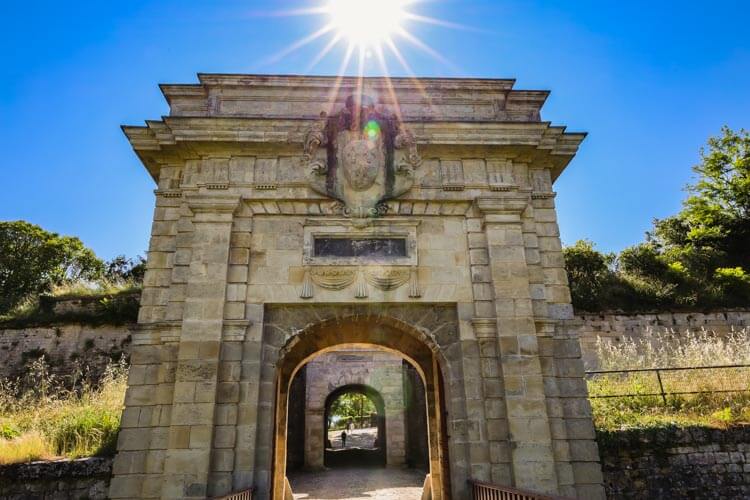
Porte Royale is a fitting and impressive entrance to the Citadelle de Blaye. It’s here that you can really appreciate the multi-level defense system with the drawbridge leading to the elegant gate decorated with the royal coat of arms.
Though it’s tempting to rush right through, take time to notice that the covered passageway was actually the first deadly trap for any assailant that managed to make it to the gate. You can still see the portcullis, which a guard could have quickly dropped closed if the fortification was in danger of being breached.
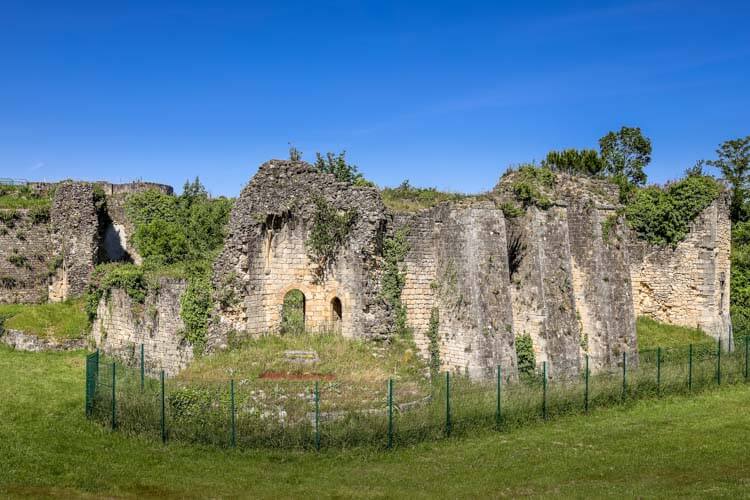
Once inside, don’t ignore the area to the right which points to the municipal campsite located inside of the Citadel. This part of the Citadelle de Blaye contains the ruins of the Château des Rudel. Yes, there’s a castle within the fortification!
It might seem odd, but the Citadelle de Blaye was already a major military outpost on the rocky promontory that needed guarding. It was originally the home of Jaufré Rudel, the Prince of Blaye, and built between the 12th – 14th centuries.
Though the castle now lay in ruins, it was actually perfectly preserved at the time in the 17th century when Vauban transformed Blaye into an almost entirely contained new town within the Citadel. The castle served as home to the governors of Blaye and was used as a residence until 1814.
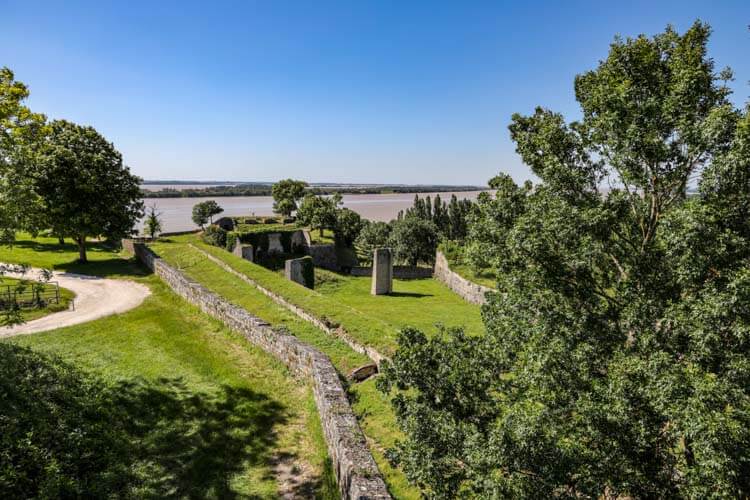
After climbing the small hill up to the tower, which overlooks the ruined Château des Rudel, continue walking along the defensive wall toward the river. You might see the Citadelle’s resident goats clambering about some buildings built into the ground.
These bunker looking buildings are actually artillery batteries, and they were built just as Vauban envisioned them to store gun powder safely underground. A high caliber cannon was positioned on a mound at the top of the batteries and you can still see the rails, which were used to position cannon for firing. An impressive network of storage galleries were constructed underneath and an elevator system allowed for the munition to be quickly brought up to the cannon for firing.
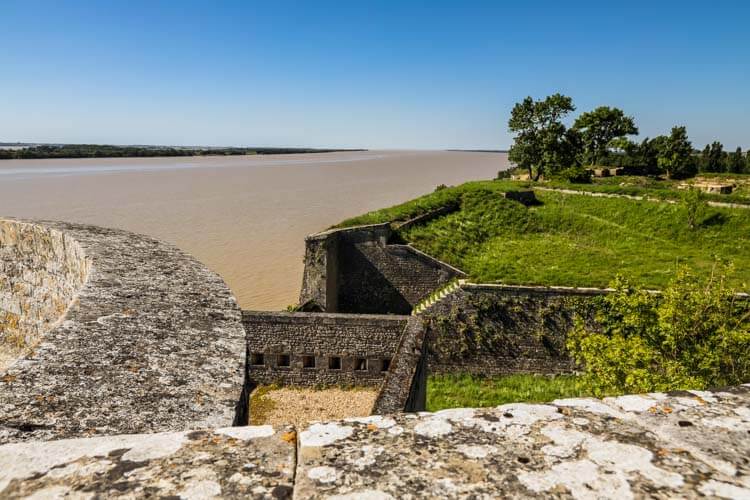
You come to the north tower or the Tour de l’Eguillette, where you can look out over and appreciate the sheer size of the Gironde Estuary. It’s the largest of its kind in Europe, with a mouth 11 kilometers wide, stretching the length of 75 kilometers and a massive surface area of 635 square kilometers.
While you’ve come to visit the Citadel, it’s really the Gironde Estuary that makes all of this part of France tick. This meeting of the Garonne and Dordogne rivers is largely responsible for the climate and conditions necessary for producing one of the world’s most famous wine blends, and the estuary is even home to the only species of sturgeon found naturally in Western Europe.
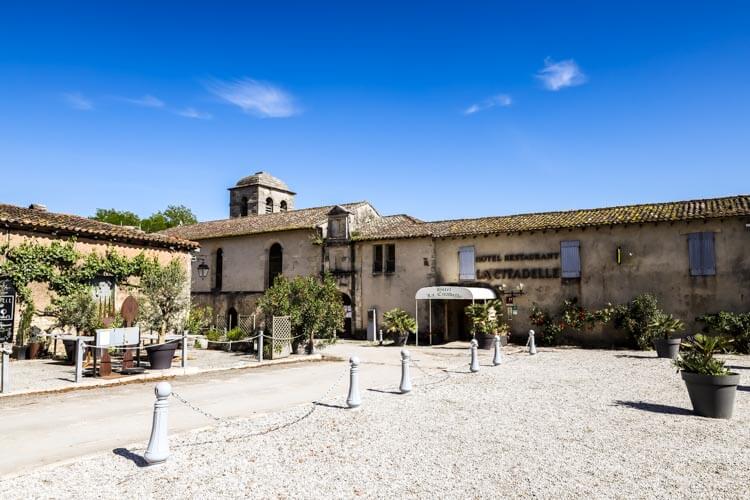
Walking along the ramparts snaking alongside the Gironde Estuary, you come to Place d’Armes. Under the shade of trees, you can sit on some of the benches and just gaze out over the Estuary.
And the Hôtel La Citadelle sits on Place d’Armes, too. If pitching a tent in the municipal campgrounds near the ruins of Château des Rudel isn’t quite your cup of tea, but a stay inside the Citadelle sounds like a unique way to spend a night in the Bordeaux wine region, then you’ll probably enjoy the boutique hotel. It even has a swimming pool, which is refreshing for those scorching Bordeaux summer days.
Place d’Armes opens on to Rue Minimes, where the Blaye Tourism Office is located. On this street you’ll also find the remains of the Couvent des Minimes. This monastery, like the Château des Rudel, was a fixture of the rocky promontory long before Vauban transformed it in to a military stronghold.
The foundation stone of the Couvent des Minimes was laid on May 13, 1607. It was completed in 1611 and consecrated by the Archbishop of Bordeaux, Cardinal de Sourdis. The order of the Minimes took a vow of poverty and entirely operated on donations. It was untouched when Vauban built the Citadel of Blaye, and the Fathers of the Minim actually continued to offer sacraments there until the French Revolution.
You can pop inside to have a look at the simple, yet elegant decoration. And you might be surprised to even find a simple cloisture inside.
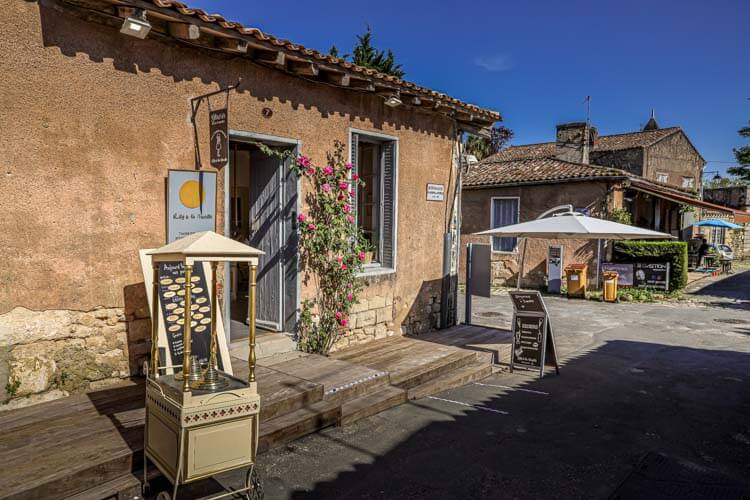
Place d’Armes opens on to Rue Minimes, where the Blaye Tourism Office is located, along with a handful of small artisan shops. We like to get an ice cream from Lily à la Vanille, who Tim says is the best ice cream he’s had since we lived in Italy.
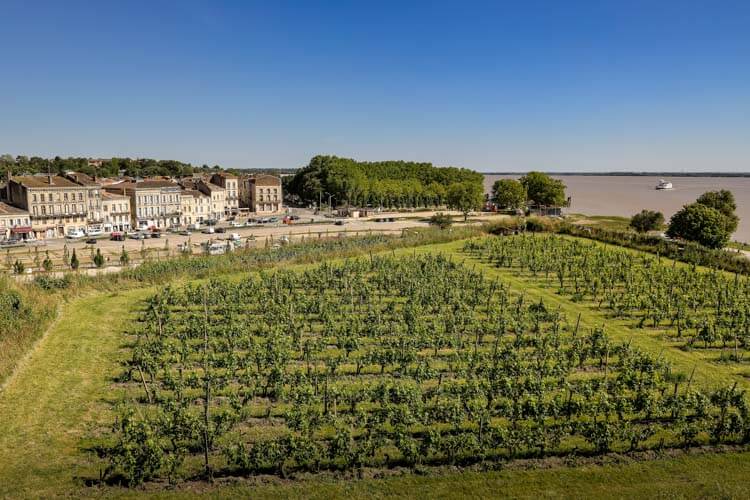
You can even find a vineyard within the Cidatel of Blaye. Climb up the embankment to the ramparts near the Porte Dauphine and you’ll overlook the Clos de l’Echauguette. It’s entirely planted with Merlot grapes, is organic and plowed by horses. One of the guided tours available through the Blaye Tourism Office is a tour and tasting of the Blaye Côtes de Bordeaux (usually only offered in French).
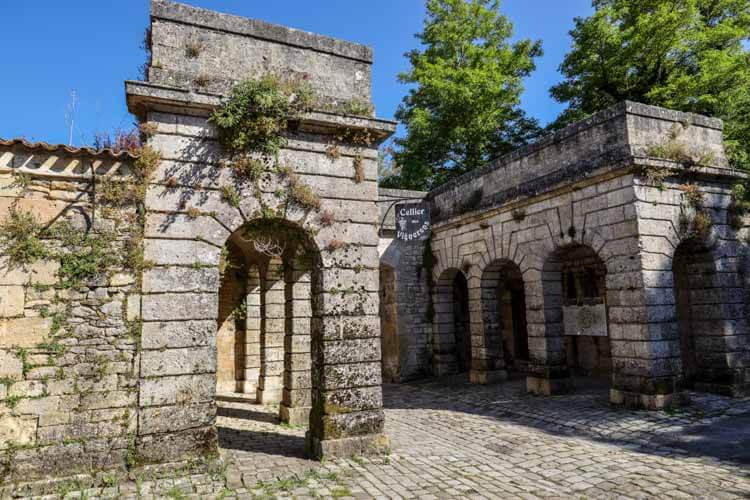
Finally, you can’ leave the Citadelle de Blaye without tasting the red wines from this Bordeaux appellation. You can pop in to the Cellier des Vignerons near the Porte Dauphine to taste and buy wines from the Blaye Côtes de Bordeaux appellation.
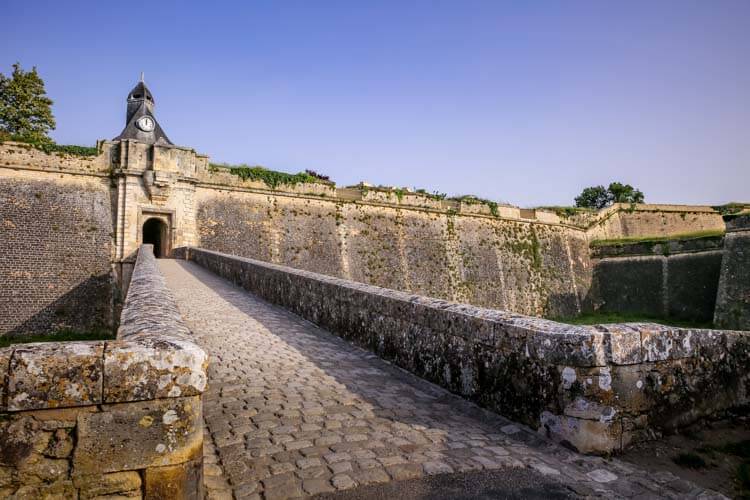
Exit out of the Citadelle de Blaye through the Porte Dauphine. It’s the only other access point aside from Porte Royale. It has a fixed stone bridge over the moat, along with a wooden gate to the door. It’s overhung by a clock tower and is undoubtedly one of the must see sights of the Citadelle de Blaye.
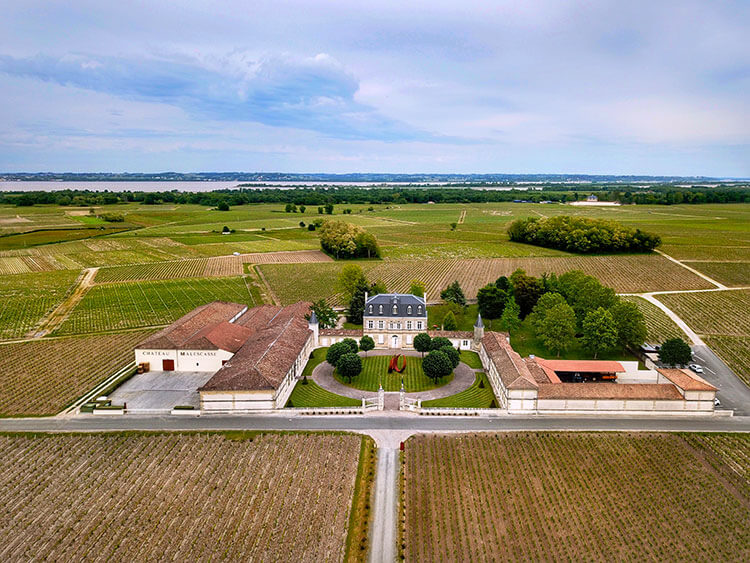
Combining a Visit to Citadelle de Blaye with a Stay in the Médoc
With a ferry link between Lamarque in the Médoc and Blaye, it’s easy to combine a stay among the vineyards with a day trip to the Citadelle de Blaye.
The picturesque Château Malescasse enjoys a privileged position on the Gironde Estuary in Lamarque. Though it’s one of the younger castles of the Médoc, this spectacular château is one you can rent out to spend a night or a few days in.
With unique wine tourism offerings at Château Malescasse, you can take part in experiences like blending your very own bottle of Bordeaux wine in their Cellar Master Winemaker workshop. It’s definitely a top Bordeaux wine experience in the region.
Aside from the fantastic wine of this estate, you have bicycles available to you to discover other nearby château in both the Médoc and Blaye Côtes de Bordeaux. Take a bicycle on to the ferry from Lamarque to cross over to Blaye in just 30 minutes time. The Citadelle de Blaye is easily accessible from the port, and a number of Blaye château are an easy bike ride away.
Know Before You Go
There is a direct bus from Bordeaux to Blaye. Take the TransGironde Line 202 from Place Ravezies to Blaye Hotel de Ville, which takes around 1:30 hours.
There is also a ferry which travels between Blaye and Lamarque in the Médoc. It can accommodate 40 cars and 300 passengers. You can also bring a bicycle aboard. Book the ferry and check the schedule on Les Bacs Girondins.
There is also a municipal campsite inside the Citadelle de Blaye. Open from May – September, the campsite is well equipped for both motorhomes and tent camping. There are onsite showers, restrooms and electricity (paid).
This article contains affiliate links. When you book on Booking.com through our affiliate sites, we earn a small commission at no additional cost to you.

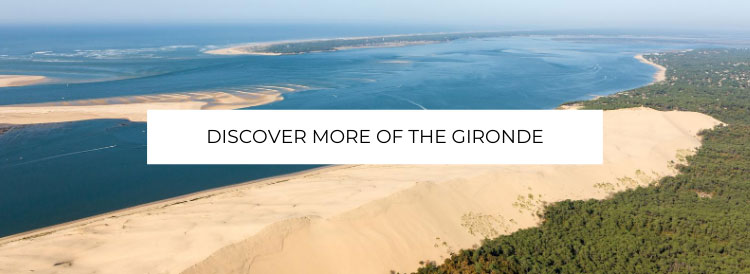
Marlene says
Beautiful. Great way to spend a day relaxing and enjoying the view.